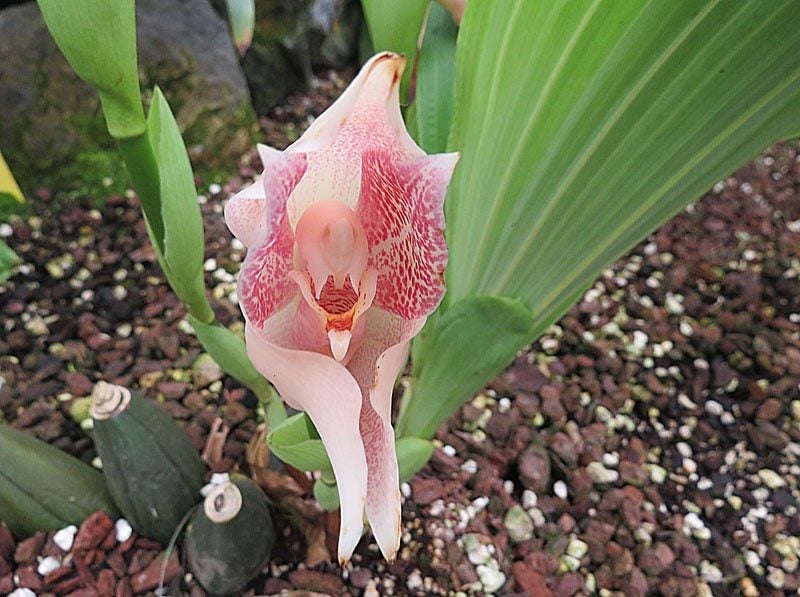Swaddled Babies Orchid: Information About Anguloa Uniflora Care


Orchids are found in almost every region of the world. Anguloa uniflora orchids hail from the Andes regions around Venezuela, Columbia, and Ecuador. Common colorful names for the plant include tulip orchid and swaddled babies orchid. In spite of the quaint names, the plants are actually named for Fransisco de Angulo, a collector who became so knowledgeable about the different species he often helped botanists classify specimens.
Swaddled Babies Orchid Info
There are ten species in the genus Anguloa, all of which hail from South America. Care of swaddled babies is similar to other orchids but relies upon mimicking the plant's native region. Most growers find that a greenhouse and high humidity are the keys to care of swaddled babies. Swaddled babies orchid is one of the largest plants at nearly 2 feet (61 cm.) in height. The name refers to the appearance of a tiny baby swathed in blankets in the interior of the flower. Another name for the plant, tulip orchid, is indicated by the exterior of the plant before it opens up fully. The overlapping petals resemble a tulip flower. The petals are waxy, cream colored, and cinnamon scented. Blooms are long lasting and perform best in low light locations. The leaves are slender and pleated with chubby conical pseudobulbs.
Anguloa Uniflora Care
Orchids in the Anguloa genus live in forested areas where there are pronounced wet and dry seasons. The dappled light afforded by their native regions needs to be maintained in cultural conditions too. These plants also require warm temperatures and are only hardy in United States Department of Agriculture zones 11 to 13. In most areas, that means a heated greenhouse is the only way to keep conditions optimal, but solariums and protected warm home interiors are also an option. Humidity is also crucial to growing Anguloa uniflora plants with big healthy blooms.
Pots and Medium for Growing Anguloa Uniflora
Conditions and site are only part of the puzzle in good care of swaddled babies. The container and medium are just as important to growing healthy orchid plants. Ideal containers, according to competitive growers, are plastic pots with drainage holes, although some use clay pots. Use a mixture of bark and perlite, often with some charcoal or coarse peat. Plastic peanuts may be added for drainage. Fertilize the plants every two weeks with a 30-10-10 in summer and 10-30-20 in winter.
Humidity and Temperature for Anguloa Uniflora Care
According to prize winning growers, swaddled babies orchids need misting up to five times a day in summer conditions. Water plants every five to seven days in summer and slightly less in winter. The proper temperatures are 50 degrees F. (10 C.) on winter nights and 65 degrees F. (18 C.) in summer evenings. Daytime temperatures should range no more than 80 degrees F. (26 C.) in summer and 65 degrees F. (18 C.) in winter. These plants may seem fussy, but they are well worth the trouble for their delicate spicy scent and long-lasting creamy blooms.
Sign up for the Gardening Know How newsletter today and receive a free copy of our e-book "How to Grow Delicious Tomatoes".

Bonnie Grant is a professional landscaper with a Certification in Urban Gardening. She has been gardening and writing for 15 years. A former professional chef, she has a passion for edible landscaping.